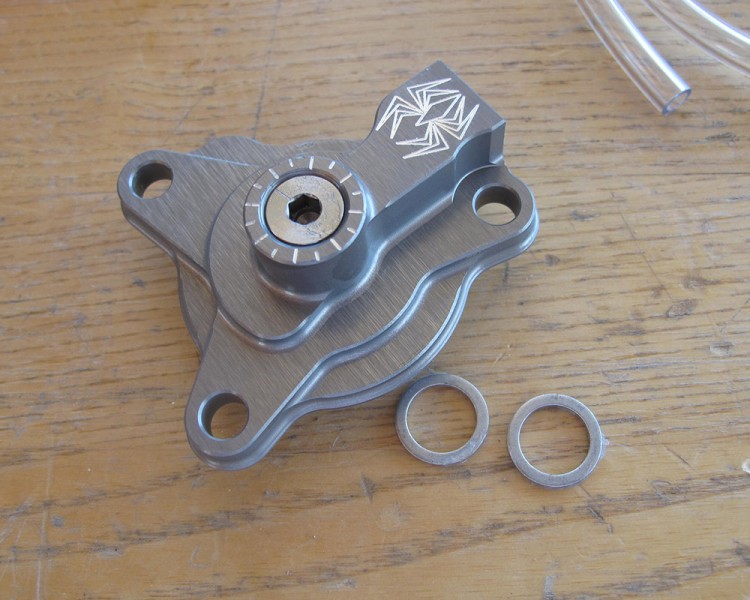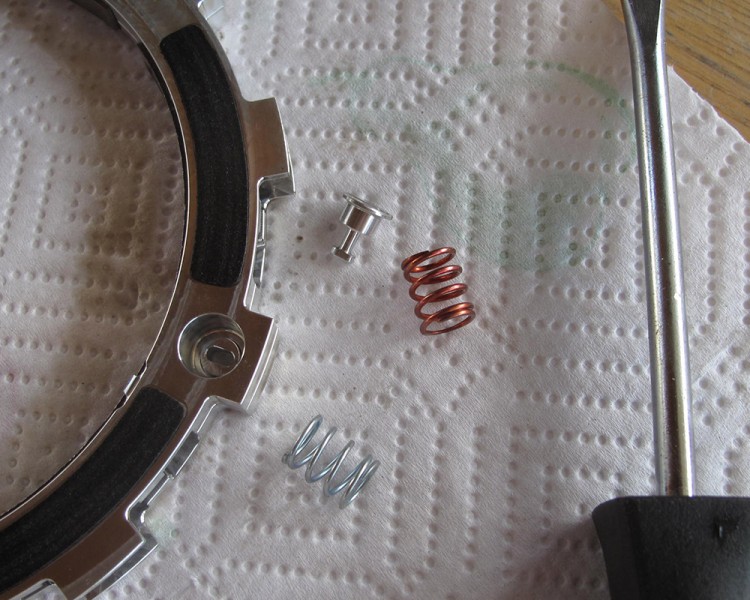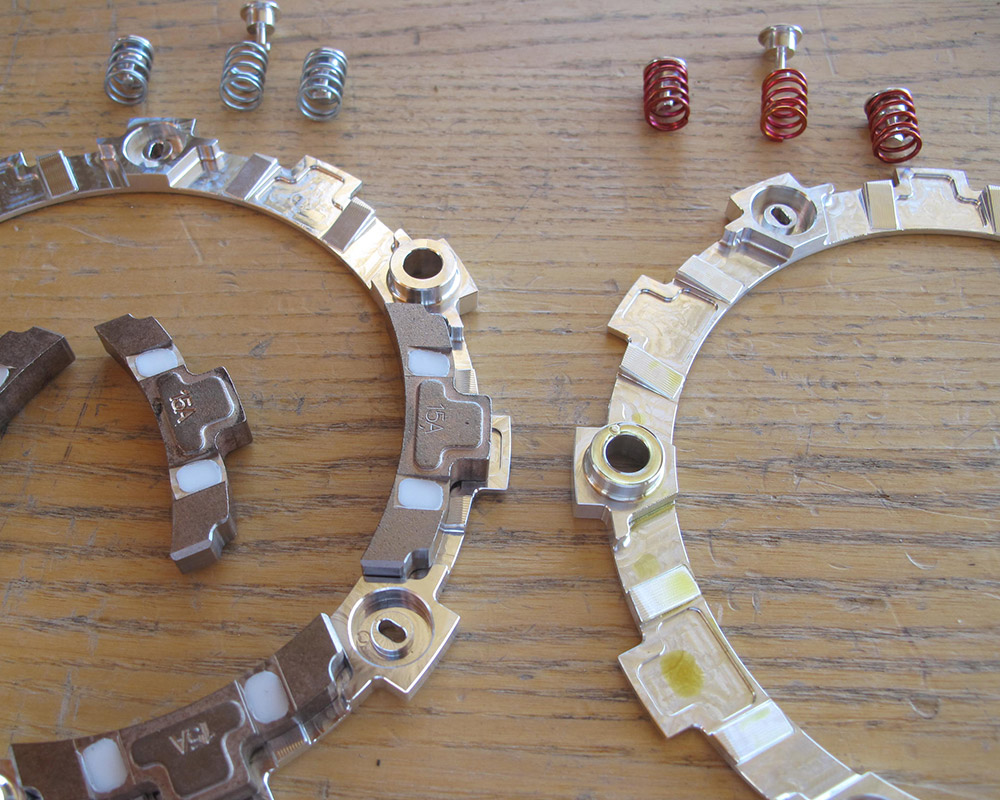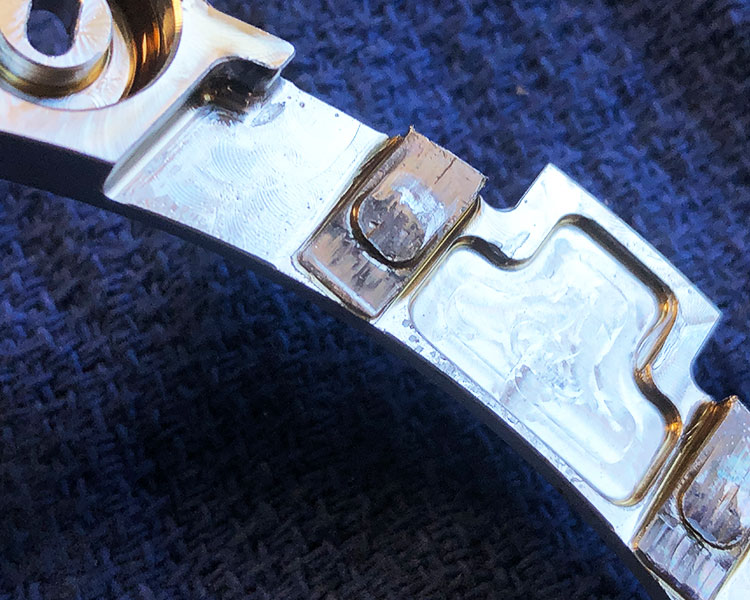DBT Tech: Rekluse Clutch Tuning Made Simple

The Rekluse Auto Clutch technology and parts have made strides in auto-clutch and anti-stall over the past decade. It has gone from seemingly a crutch to help riders who did not have clutch control to a highly tunable performance advantage for all levels of riders. I have been a fan of the clutch since the z-Start days and continue to use them in many of my personal bikes. Especially my trail riding machines. But I’ve used them in motocross bikes as well.
There are some very basic tips that can really help and simplify making the clutch work the best for you. Lately we have been testing the EXP 3.0 and Core EXP 3.0, Radius X and CX and thought we would put out these tips to help Rekluse owners get the most out of their tool. The Rekluse EXP 3.0 is highly tunable so why not take advantage of it if you feel the need.
With tuning you can add hit or snap to the power delivery or even smooth it out. You can adjust the feel of compression braking on four-strokes as well as make the bike nearly impossible to stall.

- The most important thing is to have the free-play gain set so that when you rev the bike in neutral there becomes free play in the lever. The manual is very specific in how to tell if it is set correct (we have a video attached below) and how to fix it if it isn’t. If there isn’t any, or there is too much free play gain, nothing any other tuning will do any good and you will likely wear out the clutch plates. Take time to set and understand the free play gain. I like to set mine so the lever moves at least 1/8th inch as recommended.
- There are two ways to alter the feel and the way the clutch bites on the EXP. With spring changes and with different weight wedges (it was different number of balls and different weight balls in the Z start). The simple way to isolate the change each makes part makes– springs change mostly the RPM where the clutch engages and the weights control mostly the “bite” the clutch has when it engages. There is some overlap but for the most part think of it like that. You can also play with the idle speed to change some characteristics of the clutch.

The springs keep the EXP plate compressed. Lighter springs allow it to open sooner, heavier springs keep it closed (disengaged) longer. - Going to lighter springs allows the clutch to engage at a lower RPM. Heavier springs hold the EXP clutch together longer and have it engaging at a higher RPM. Mixing the springs (different colors=different rates) can yield half-steps. The recommended Rekluse setting is, for me, too high of a clutch RPM for most off-road riding. Lighter springs also allow the clutch to stay engaged longer and if set properly will not allow the bike to barely freewheel at all. In fact I have mine set to drag slightly at idle, enough that I usually need to hold the brake lightly. If you want a sharper hit or bigger power when the clutch engages, then stiffer springs are the way to go. It requires a slightly higher RPM for the clutch to engage. That will also let the bike freewheel easier if the rear wheel is locked and the RPM is not back up to re-engage the clutch.

The wedge opens and closes the EXP plate. The more mass the weight has, the harder it is to get it to move and when it does it has more force. - The weights change mostly how quick the clutch bites and how long it stays engaged on deceleration, then how quickly it lets go. The heavier the wedges, the harder the bites (less progressive engagement) and the longer it stays connected. Lighter wedges slip a little longer and have a softer grab. I generally prefer the heaviest wedges (and sometimes would like heavier ones than are offered) for off-road riding on most bikes that have decent power. Sometimes a small-bore bike (125s, 200s, 250Fs) can get bogged down if the wedges bite too hard. For most riders the standard wedges are the ideal setup.

The Rekluse is a very simple design for how complex its results are. It comes apart for tuning in seconds with just a screwdriver. Spring rates change with different color springs. - To add an aggressive, more motocross hit to the clutch, adding a heavier spring setting and using heavy wedges will give the impression of a very quick and aggressive release of the clutch. This is a little more prone to stalling when getting on the gas but less stalling when getting on the brakes.
- For a softer off-road setting the lighter springs and lighter wedges will smoothly engage the clutch and let it slip longer as the RPMs increase.
- Spring rates Soft —> Hard: Steel(dull), Silver, Red, Blue, Gold.
- When you get the right feel from the clutch then small tuning of the free play gain can slightly alter the feel, mostly the drag.
- Absolutely make sure you have some free play gain at all times. It is easy to check and you should do it before every ride and for sure any time the clutch has been abused.

This is a worn ramp on the EXP disc. - Inspect the EXP plate for wear in the channels the wedges slide in. We have seen wear develop in 100-hours with some abusive riders (or contaminated oil) and have a few bikes with over 500 hours that show very little to no wear. We have not seen too much difference in wear based on the specific oils we have used. Yet we have always used high-quality motorcycle oil and if not that the go-to is 15W-40 diesel truck oil. The area to look closely at is where the Teflon ( ball bearing rollers on very old EXP units) slides on the ramps.


Here is a video we did explaining the EXP:
Rekluse has a hard rocking video to explain the free play gain:
With these tips you should be able to get the feel you are looking for out of your Rekluse EXP 3.0 clutch and promote long plate life as well.
Here are some of our tests of Rekluse clutch components:
https://dirtbiketest.com/product-tests/rekluse-core-exp-3-0
Rekluse has tech service that can diagnose most issues and has tons of resources on it’s web site at: http://www.rekluse.com/
Support DBT by searching and shopping through the links below:



12 Responses to “Tech: Rekluse Clutch Tuning”
Jeff Burnett
Couldn’t come at a more convenient time, finishing the install of a 3.0 in my my Fe350…
Eric
I have had mine now for 130 hours (2014 KTM 250xc 2 stroke w/ EXP 3.0) and have replaced all my parts you can possibly replace because when I go to slam on my brakes for a corner in woods racing it just dies. And after changing out the white plastic wedges, fibers and steel plates and even the top/bottom silver plates with the springs in it its still doing the same dang thing. I cannot figure it out. The clutch works fine using it as if I didnt have the 3.0 in there at all but I just cannot get it to stay I guess you would say engaged coming to a fast stop and its just catches something and stalls out. PLEASE HELP? Change springs?
original settings at Y & 1/2 silver, 1/2 red. Now its at Z (hardest) and still 1/2 and 1/2.
Jimmy Lewis
Did you replace the actual outer clutch pieces or plate? I have seen over time (not on 3.0, but on earlier 2.0) the ramps wear. Also your other plates, metals and fivers may be warped just a little and this is causing the lack of free movement. Additionally making sure the “free gap” is set properly is crucial.
Eric
It is a brand new 3.0 pretty much now because I’ve bought every single part you can replace
Jimmy Lewis
There has to be something wrong. Every Rekluse I have disengages just fine. When there is an issue, it is generally something pretty simple for a good mechanic to diagnose, maybe something simple you have overlooked.
Eric
Yep and Rekluse being the awesome company they are found it. The new parts they sent me were TRASHED they said. Can you believe that? lol. Good thing I sent it to them to inspect it. ($6 shipping only, nice!) They are replacing everything except my fibers for free since I already bought everything to replace it/rebuild it to begin with. Very awesome customer service. Cross your fingers. 🙂
Jimmy Lewis
Look through troubleshooting in instructions and you will figure out where you messed up.
Troy Herbert
Is it normal for exp core 2.0 to make noise during operation ?
Jimmy Lewis
What kind of noise? Squeal? Shuddering?
Nigel Tills
I’ve just put rekluse 3.0 in my sons ktm85 and when I set it to have free play you can almost ride off with the clutch lever in So if I then set it to no free play it’s better but still moves is this right?
Jimmy Lewis
No free play is bad. If the clutch heats up it will never have full pressure and then slip all the time.
Jimmy Lewis
There are a few things depending on availability for that model. To fix that try running the idle slightly higher. This is easy and a great way to tune it. Then softer springs as steps in three spring increments are hard for most riders to feel, it isn’t a major change in function. More of a tuning step. The next is to try heavier wedges if available. They will make the bite a little harder but they also stay engaged longer.